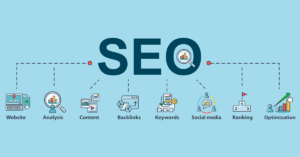Remodeling your bathroom can add value to your home. It can also save money on energy and water, as well as reduce the risk of mold and mildew.
Local building codes and safety regulations may require permits for any work that affects plumbing or electrical systems. A professional contractor can help you navigate the permitting process. Contact J&R Construction now!

Plumbing upgrades can improve water pressure and the quality of your home’s water. Adding a water-filtration system is also a smart move for families with sensitive skin, or anyone who wants to be more mindful of the environmental impact of their water consumption. During a remodel, it’s an ideal time to upgrade your pipes from old copper to PEX or even replace them altogether. This can save you money in the long run on repair bills and lower your water bill by ensuring that you’re getting maximum flow with minimal energy use.
In a bathroom remodel, the biggest decision is whether to DIY or hire a professional. It’s generally best to leave any plumbing or electrical work to a professional contractor, who can make sure your new design is safe and up to code. This is one of the areas where a reputable remodeling company can really save you time, money, and headaches in the long run.
It’s also worth considering universal design elements during your remodel, especially if you have family members with disabilities or older loved ones living in the house. Including features like low-threshold showers, grab bars, slip-free flooring, and hands-free faucets can help all household members live more comfortably.
Before the walls and flooring are put in, you’ll need to remove any existing fixtures. This can include the toilet, tub or shower, cabinets, sink, and mirrors. This is when it’s a good idea to choose a neutral color palette for your vanity and cabinetry to give the finished room a clean, consistent look. You’ll also want to be sure that all surfaces are properly prepared for paint or tile and that you’re using moisture-resistant materials, as well.
Electrical
A bathroom is a special space in that it must be both soothing and practical. Choosing the right electrical upgrades can make your space more functional and enjoyable.
If you’re planning a surface-level remodel, this might include adding some additional light fixtures or moving existing outlets. However, it’s important that these additions are made by a qualified electrician. This will help ensure that the work is done correctly and to code.
This is particularly important in bathrooms where the water and electricity are exposed to moisture. This can cause damage to the components and lead to safety hazards if not handled properly.
It’s also important to have the proper wiring for both a light fixture and exhaust fan. This will prevent the lights from overworking the electrical system and allow for a sufficient amount of ventilation.
The next step in a typical remodel is framing, which involves building the walls. This may be necessary if you’re changing the bathroom’s layout or if you’re installing new fixtures, such as a shower stall or bathtub.
Once the wall framing is complete, plumbing and electrical systems can be installed. This is called “rough-in.” It’s important to have the correct plumbing and electrical for a safe and functioning bathroom.
It’s a good idea to wait until this point to install your toilet. This way, it won’t be disturbed while you’re working on other parts of the room. This is particularly true for a gut renovation, which can involve dropping walls and completely redoing the electrical wiring and plumbing. This can be a messy and expensive job. It’s best to hire a professional to avoid costly mistakes and unnecessary delays.
Flooring
A well-chosen flooring upgrade makes a big difference in how your bathroom looks and feels. New floors also add value to your home, especially if you’re planning to sell in the future.
A variety of materials offer the versatility you need to find the perfect fit for your space. The most popular choices for bathrooms include ceramic and porcelain tile, natural stone, and cork. Each has its own pros and cons, so it’s important to consider your design goals, lifestyle needs, and budget when selecting a material.
Wood flooring is a stylish option that’s making its way into more bathrooms. However, solid wood is prone to moisture damage and may warp or mildew in the presence of water. Engineered wood is a better choice because it has a plywood base that holds up against high moisture conditions. Plus, it has a top layer of authentic hardwood veneer for beauty.
Concrete is another edgy flooring option that suits a modern or industrial design aesthetic. It’s durable, water-resistant, and comes in a range of colors and textures. You can even have your concrete floor stained, dyed, or textured to add more visual interest.
Vinyl flooring is another bathroom staple that offers a lot of flexibility. Waterproof core vinyl (WPC) and solid-core vinyl (SPC) have a printed layer that keeps up with trends, so you can easily find an option that complements your bathroom décor. Plus, it’s easy to clean and resists bacterial growth.
If you’re looking for a less expensive, do-it-yourself flooring option, consider laminate. It’s a great alternative to solid wood and comes in a variety of designs, from traditional oak to trendy marble. Just make sure the laminate you choose is rated for use in wet spaces and has good traction.
Cabinets
Cabinets are a major focal point in the bathroom and wield transformative power by providing vital storage in high-traffic areas. Efficient cabinets eliminate clutter and optimize space, making the room appear larger and more inviting. Thoughtfully designed bath cabinets also help to emphasize a design theme and create an upscale aesthetic.
The material, finish, and hardware used to design your cabinetry can make a significant impact on your bathroom’s style. Solid wood cabinets, for example, pair beautifully with many different architectural designs and interior design styles. However, wood is susceptible to humidity, which can lead to warping over time. To combat this problem, it’s essential to choose a high-quality wood or finish that is moisture-resistant.
Another popular choice for bathroom cabinetry is plywood, which offers a robust structure and an appealing finish. Laminate is also moisture-resistant, and it’s available in a wide variety of colors and patterns. Your remodeling contractor can recommend a suitable material for your project and budget.
If you’re on a tight budget, consider refinishing your existing cabinets instead of installing new ones. This process involves sanding down the old finish and applying a fresh coat of paint or stain. It’s a cost-effective way to refresh your bathroom and is easy for homeowners to DIY.
You can also update your bathroom by changing out the existing hardware. Shower heads, vanity faucets, and drawer knobs can be swapped out for stylish replacements that are in line with current trends. Swapping out the fixtures can instantly transform your bathroom’s look and feel, without the expense of installing new cabinets. If you’re looking to upgrade your bathrooms with custom cabinets, work with a licensed designer who can provide expert guidance throughout the design and installation process.
Lighting
A well-lit bathroom can provide a comfortable retreat from the stresses of daily life. Upgrading your fixture, fan, and mirrors will not only improve the lighting but create a more streamlined look that maximizes space. Incorporating decorative or accent lighting also serves to set the ambiance of your bathroom.
There are a variety of light fixtures available on the market to meet your design style and needs, from modern pendants that can double as artistic elements to simple flush mounts. Concealing lights behind mirrors and fixtures is another way to achieve a mood-setting effect without overwhelming the space.
Lighting upgrades also include recessed lighting, with various size options that can highlight features and make your shower feel bigger. Smart recessed cans are another option, offering a wide array of color options and settings to suit your taste, as well as scheduling functionality.
Task lighting illuminates “work spaces,” such as the vanity area, while accent lighting adds depth and dimension to a room. For a bath, the ideal setup for task lighting is two fixtures flanking the sink to prevent shadowing.
If you are looking for an elegant finishing touch, consider adding chandeliers or candlestick-type wall sconces to your bathroom. Keep in mind that while these pieces can add a sense of drama, they are best suited for smaller bathrooms. If you have a large space, they can overwhelm the room and look out of place. Regardless of the type of lighting you choose, make sure it is rated for wet areas and has the appropriate safety ratings to prevent a fire hazard in your home. It is best to have these types of upgrades completed by a licensed electrician, who can properly install the lighting and upgrade your breaker box as needed.







